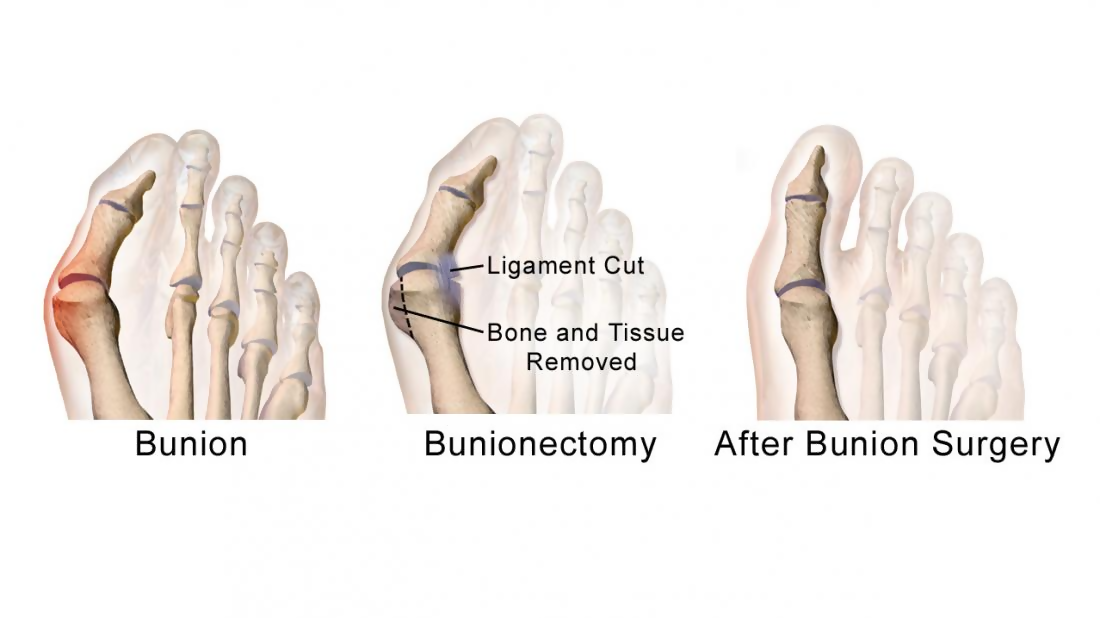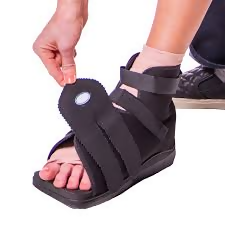A bunion refers to a bony bump that is formed at the bottom area of your big toe, where it joins the foot bone to form a union known as the first metatarsal. When you have a bunion, your big toe points overly towards your second toe. It is a foot deformity that comprises of both soft tissue and bone.
This foot deformity can be very painful. One of the most common reasons for this condition is wearing shoes that are very narrow or small in the toe area. This can also be considered as a pressure-response impact. Women are more prone to develop this deformity as compared to men.
Bunion removal is a surgical operation that focuses on correcting the malformed region of the foot close to the big toe. The procedure of Bunion removal is also called hallux valgus correction, bunionectomy, or bunion operation. Hallux valgus is a Latin term that refers to ‘foot malformation’.
If non-surgical methods are not effective for relieving your pain, then bunion removal becomes an obligatory surgical procedure.
Opting for the Bunion Surgery
There are a large number of people who experience comfort and relief from the bunion pain by wearing larger shoes that have a broader toe cap. For example, a person with such a foot deformity may decide to wear sports shoes rather than high heels to ease the pain.
Using protective pads for cushioning the bunion also helps. If someone still experiences pain in spite of making these lifestyle changes, then he can choose to undergo a bunion removal surgery as it will prove to be an effective treatment procedure.
Houston foot specialists at DeNiel Foot and Ankle Center offer more than a hundred different forms of bunion removal surgeries to take out the baunion and to readjust the big toe. Factors like the size of the bunion and the way it has developed determine the type of surgical procedure that suits you.

Preparing for the Surgery
Before the scheduling of bunion surgery in Houston, you will need to undergo certain medical tests to assess your comprehensive health. These medical tests include:
1) The X-ray of your lungs
2) Monitoring your heart function for performing an electrocardiogram.
3) Examining your urine and blood to detect any underlying disease or ailment.
You will also be required to stop taking any medications for several days before undergoing the surgery, especially if you take any blood-thinning medicines such as aspirin.
Bunion surgery is generally an ambulant procedure and allows you to go home in several hours after the completion of the surgery.
You can consult your doctor to determine the duration of fasting before the bunion surgery according to the time of your surgery. You must follow their instructions carefully to prevent any potential complications.
The Procedure of the Surgery
The majority of the people don’t require a general anesthetic before the surgery but you will be given a local anesthetic known as ankle block. It causes numbness below the ankle; however, you will be awake during the surgery.
After you are entirely numb, the surgeon will take out the bunion and will make other required corrections to your foot.
The following are a few common types of bunion surgeries:
In this procedure, the surgeon will remove your big toe joint and readjust it to the usual position.
The bunion will be removed by the surgeon without making any realignment.
The damaged joint will be replaced using metal plates or screws to repair the deformity.
After the surgery has been successfully done, you will be shifted to the recovery room and your foot will be bandaged. The surgeon will monitor your heart rate and blood pressure.
Recovery
The complete recovery takes about 4 to 6 months. During the first two weeks, you will have to wear a surgical cast or boot to protect your foot. You should also take care that the stitches don’t get wet.
After the surgical boot is removed, you will not be able to endure weight on your foot and will require crutches for support. Foot specialist Houston advises to ice your foot to speed up the healing process and minimize inflammation. Ensure to keep off your feet as much as possible.
Also, your foot will continue to remain swollen for a few months after the removal of a bunion. You should wear shoes that have a wider toe box to reduce the pain. Women must not wear high heels for about six months after the bunion surgery. You can consult your doctor for any physical therapy and exercises to strengthen your foot.

Bunion removal surgery is extremely successful and the majority of people who opt for this surgery experience reduced pain in the foot and improved alignment of their big toe.
If you have any queries, please feel free to contact our office located in Houston, TX. We offer the newest diagnostic and treatment technologies for all your foot and ankle needs.
Read more about bunion removal